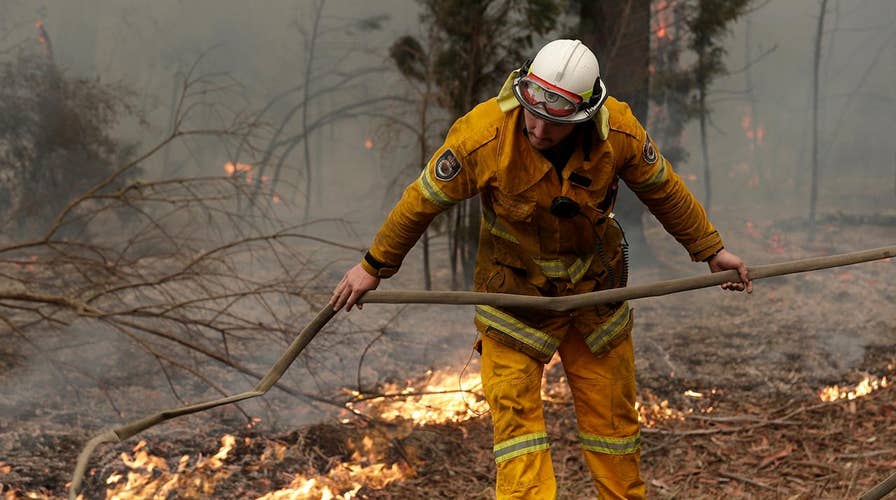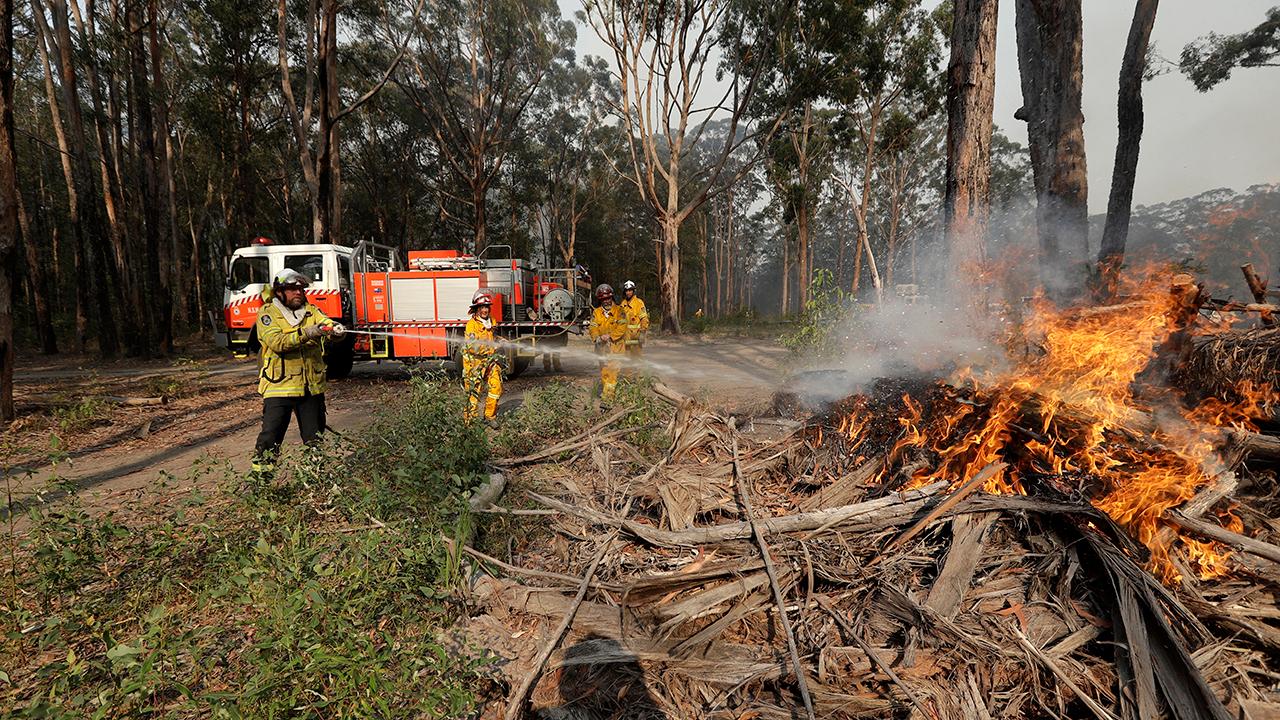Firefighters in Australia fear warmer temperatures will reignite contained fires
Warmer temperatures are in the forecast again as devastating wildfires continue to rage in Australia; Jeff Paul reports from Bewong.
Australian communities besieged by raging wildfires were able to receive supplies on Monday after a change in the weather, as officials warn that conditions will deteriorate later this week, allowing some wildfires to merge into a "mega blaze."
Thousands of firefighters continue to battle the blazes that have burned millions of acres in New South Wales, Victoria and South Australia, an area twice the size of Maryland. Nationwide, at least 25 people have been killed and 2,000 homes destroyed by the blazes, while hundreds of millions of animals are believed to have perished.
In the state of Victoria, authorities are concerned that three fires burning near the border with New South Wales may merge into a "mega blaze" when the heat returns to the region.
"These blazes certainly are concerning," Emergency Management Victoria's David Bruce told reporters Monday. "Like NSW, we've had a bit of a reprieve, but the fires are still very active so we'll be doing everything we can to consolidate ahead of Thursday."
AUSTRALIA'S DESTRUCTIVE WILDFIRES SEEN FROM SPACE IN NASA IMAGES
The blazes that are drawing the concern of authorities involve one near Corryong in Victoria and two in Kosciuszko National Park and are about 6 miles apart, Australia's 7News reported.
Rain and cooler temperatures on Monday may have brought relief to communities, but made it challenging for fire crews to complete strategic burns as they tried to prepare for higher temperatures
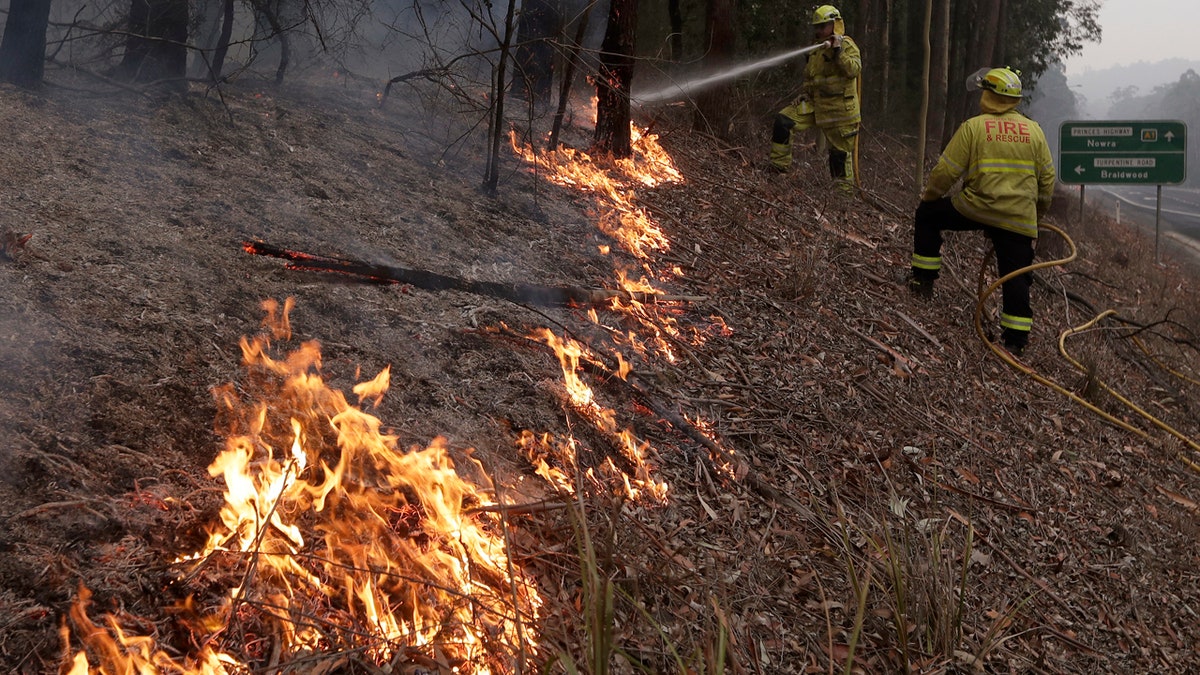
Firefighters manage a controlled burn to help contain a larger fire near Falls Creek, Australia, Sunday, Jan. 5, 2020. (AP Photo/Rick Rycroft)
"With the more benign weather conditions, it presents some wonderful relief for everybody: the firefighters, the emergency services personnel, but also the communities affected by these fires," Shane Fitzsimmons, commissioner of the New South Wales Rural Fire Service, told reporters. “But it also presents some real challenges when it comes to implementing tactical and strategic back-burns and other techniques to try and bring these fires under control.”
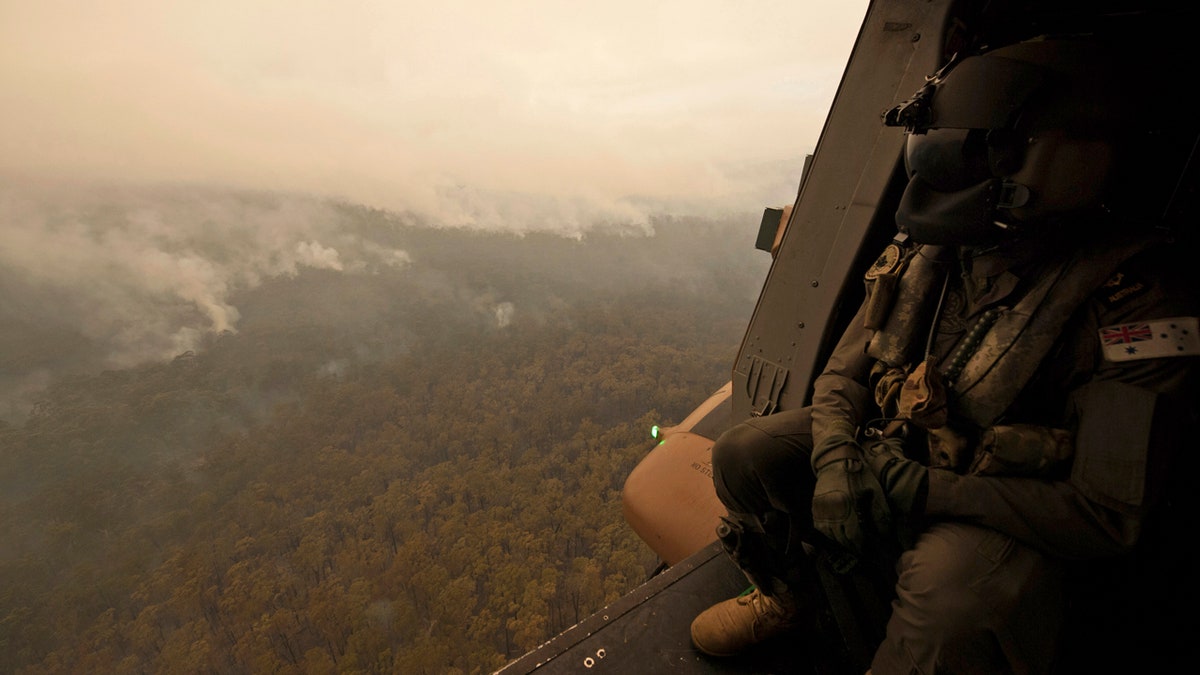
The wildfires have so far scorched an area twice the size of the Maryland. (Private Michael Currie/ADF via AP)
More than 135 fires were still burning across New South Wales, including almost 70 that were not contained. Officials have warned that the rain on Monday won't put out the largest and most dangerous blazes before conditions deteriorate again.
On Monday, Australian Prime Minister Scott Morrison said the government was committing an extra 2 billion Australian dollars ($1.4 billion) toward the recovery effort in addition to the tens of millions of dollars that have already been promised.
“The fires are still burning. And they’ll be burning for months to come,” Morrison said. "And so that’s why I outlined today that this is an initial, an additional, investment of $2 billion. If more is needed and the cost is higher, then more will be provided.”
Australia’s capital, Canberra, had the worst air quality of any major city in the world for much of Monday. The Department of Home Affairs, which is responsible for coordinating the country’s response to disasters, told all noncritical staff to stay home because of thick smoke choking the city.
The National Gallery of Australia said it was closed on Monday to protect visitors and artworks from Matisse and Picasso due to the smoke, Reuters reported.
AUSTRALIA WILDFIRES DEVELOPING THEIR OWN 'DANGEROUS' WEATHER SYSTEMS, NEW ZEALAND SKIES TURN ORANGE
Heavy smoke was hampering the navy’s efforts to airlift people out of Mallacoota, a coastal town in Victoria cut off for days by fires that forced as many as 4,000 residents and tourists to shelter on beaches over the weekend. Around 300 people were still waiting to be evacuated on Monday.
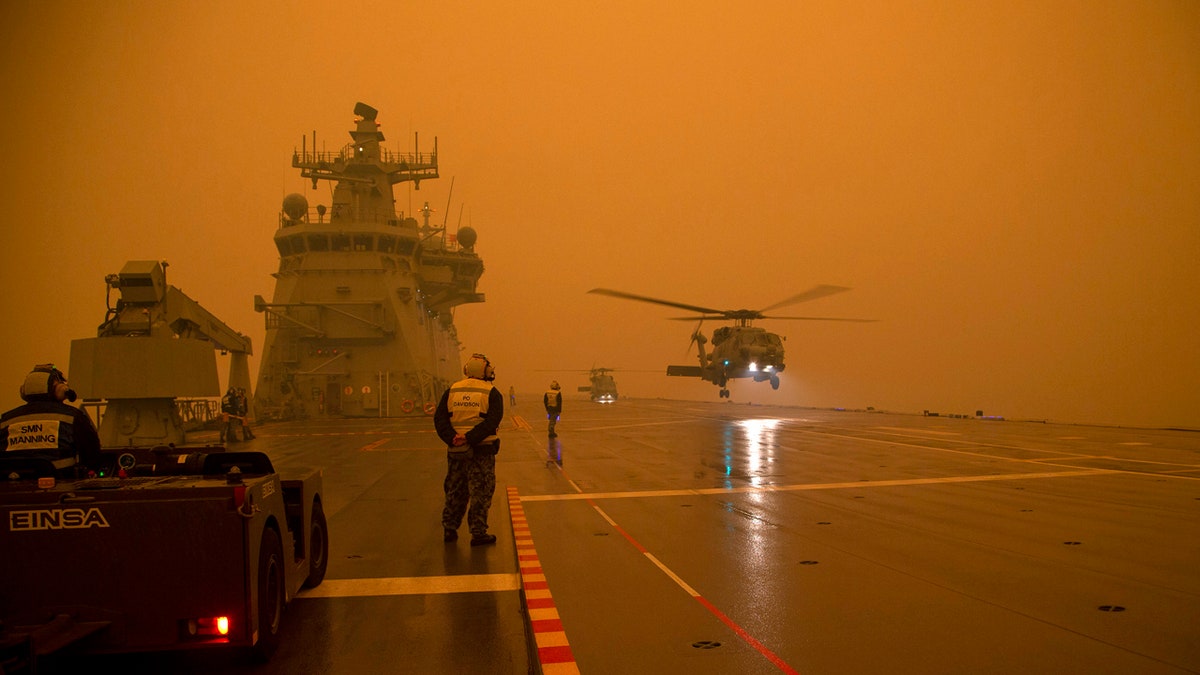
In this photo provided by the Australian Department of Defense, a Royal Australian Navy Seahawk Helicopter departs from HMAS Adelaide while at sea off Australia's east coast, Sunday, Jan. 5, 2020, during operations to assist in battling wildfires. (Able Seaman Thomas Sawtell/ADF via AP)
On Kangaroo Island, a refuge off the coast of South Australia state for some of the country's most endangered creatures, teams had arrived to help euthanize livestock and wild animals injured in the blazes.
In addition to the scores of wild animals that have been killed, Morrison said nearly 4,000 cattle and sheep are among the dead in the fires.
CLICK HERE FOR THE FOX NEWS APP
Officials warned that Australia's wildfire season — which generally lasts through March — was nowhere near its end. Wildfires are common during the southern hemisphere summer, but this year’s fires arrived unusually early, fed by drought and the country’s hottest and driest year on record.
Morrison has faced mounting critism over what many Australians have viewed as his lax response to the crisis. On Saturday, he announced he would dispatch 3,000 army, navy and air force reservists to help battle the fires and committed 20 million Australian dollars ($14 million) to lease firefighting aircraft from overseas.
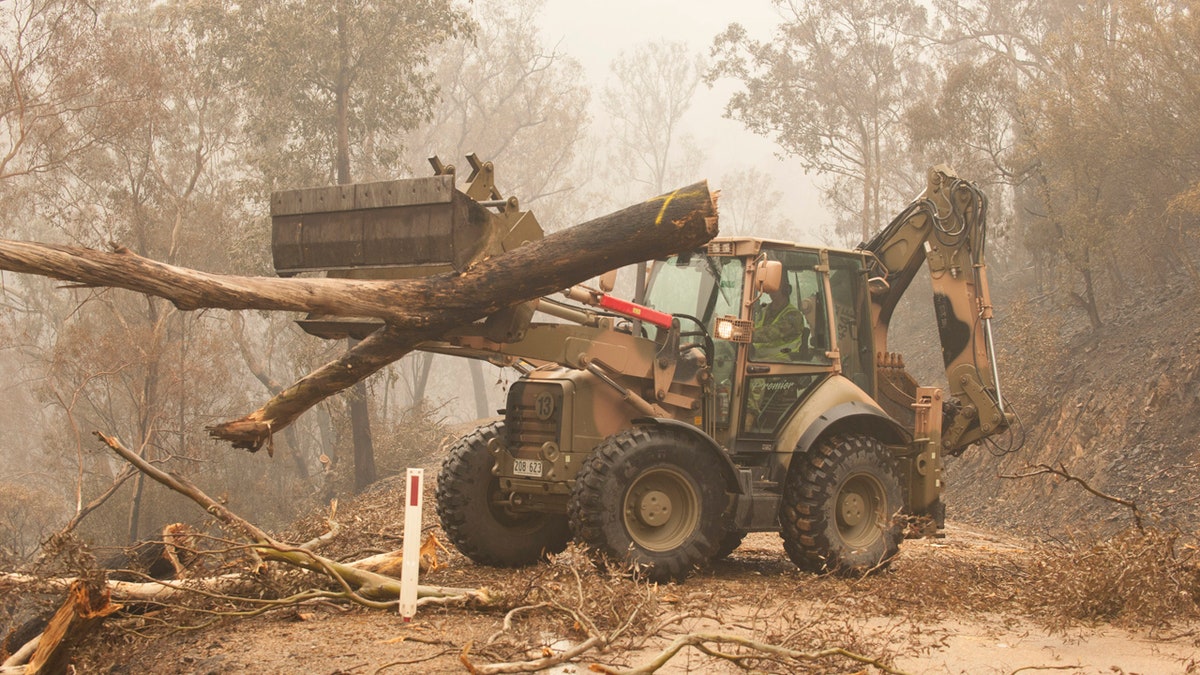
Australia's government on Monday said it was willing to pay "whatever it takes" to help communities recover from deadly wildfires that have ravaged the country. (Department of Defence via AP)
But others, such as the environmental group Greenpeace, said the relief funds announced by Morrison were “a drop in the ocean,” given the widespread devastation from the fires. Many have also urged the government to act on climate change.
“Every single cent of that money should be contributed by the coal, gas and oil companies whose carbon pollution has caused the climate crisis that has created these extreme fire conditions, right across the country,” Greenpeace Australia Pacific Head of Campaigns Jamie Hanson said in a statement. “Slugging everyday taxpayers with the bill for this just adds insult to injury. These big polluters have become rich by trashing our climate and it’s time that they started coughing up for the repair bill."
The Associated Press contributed to this report.
